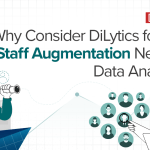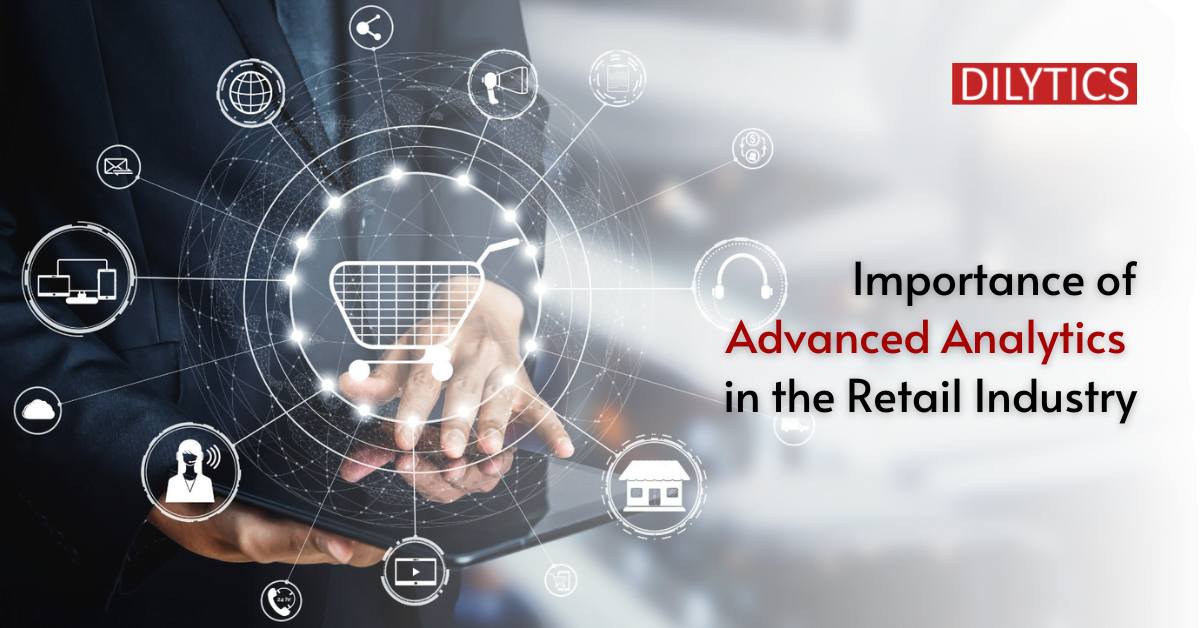Today’s retail industry is facing a flock of new challenges with new technologies, an uncertain economy, reduction in sales, high competition especially from e-commerce (online) stores with cheaper prices or heavy discounts, and the ever-changing consumer preferences. Post Covid-19 pandemic, Consumer activity has been shifting from offline to online, and most traditional retailers have struggled to expand their technological capabilities. It has sped up many of these trends, leaving retailers struggling to keep pace.
Retailers now focus to include multiple channels, and constant communication with the consumers including digital mediums for advertising, social media targeting, influencers, and email, the amount of internal and external data is increasing exponentially. Many retailers are now considering how to manage and leverage unstructured “big” data from social media, third-party sources, etc.
Successful retailers are constantly evolving and adopting new technologies – advanced analytics on rich data to turn customer insights into retail excellence to keep winning among this fierce competition but at the same time keep moving forward in the retail catastrophe.
As per McKinsey&Company’s new research, “Retailers using Advanced Analytics outperform the competition by 68% in earnings — and the disparity is growing exponentially.
As per Deloitte, usage of Advanced Analytics in Retail will increase the pricing solutions and can expect an immediate margin performance improvement of 2%–4% and a sales growth of 1%–2%.
Role of Advanced Analytics in Retail
Nearly all retailers are doing some form of data analytics, even if they’re capturing data and reviewing the sales projections/revenue numbers in Excel. But there are certainly numerous differences between an Excel analysis and using purpose-built AI to analyze a huge amount of data at once.
With the right tools, retailers can leverage the information to get better insights, discover trends, predict outcomes, and make better business decisions that help them to grow their businesses. And this will allow them to stay ahead of their competition. Most of the data generated about customers originate from three components of their business:
- Point of sale
- Customer loyalty programs
- E-commerce
These components allow retailers to utilize what is known as “actionable data,” which can be broken down into four types of retail data analytics:
- Descriptive analytics (“What happened?”)
This is the simplest type of data analytics; descriptive analytics helps retailers organize their data by using current and historical data to identify trends and relationships. It works by bringing in raw data from multiple sources to provide valuable insights into past and present performance. Data visualization tools, such as Tableau can help parse data, identify trends and relationships between variables, and visually display information or even with basic statistical software, such as Microsoft Excel.
- Diagnostic analytics (“Why it happened?”)
Diagnostic analysis can be viewed as a logical next step after using descriptive analytics to identify trends and determine the causes of trends (why a trend or relationship occurs). It can be done using statistical software, algorithms, and sometimes, machine learning, to dive deeper into the data and find correlations between variables. It can also be used to find differences and flag potential problems as they happen.
- Predictive analytics (“What will happen?”)
Predictive analytics uses findings from both descriptive and diagnostic analytics to predict future trends and events. It helps to drive strategic decisions by using historical data to forecast potential scenarios. It can be done manually or using machine-learning algorithms.
Thus, to forecast future trends and account for the most important correlations, retail predictive analytics must use a combination of AI, ML algorithms, and automation.
- Prescriptive analytics (“What to do next?”)
Prescriptive analytics is the most advanced type of analytics using data to determine an optimal course of action. It often uses machine-learning algorithms to parse through large amounts of data faster thus a valuable tool for data-driven decision-making.
While ML algorithms can provide data-informed recommendations, they can’t replace human judgment. Your judgment is valuable and necessary to provide context and guardrails to algorithmic outputs. It is not complicated, with the right foundation, it can be a powerful tool to help optimize processes, formulate strategies, and reach organizational goals.
Conclusion
Maximizing Your Retail Business with Advanced Analytics
With the data generated through multiple retail channels, the right predictive analytics tools can help retailers to make informative decisions on promotions, pricing, inventory, and procurement. Nowadays, retailers find it difficult to sell the right products to the right customers at the right price which can be a real challenge. Today, to be successful in retail, you got to rely on advanced retail analytics to get past that challenge.
For that, retailers need processes that are data-backed that can harness the power of retail data points in their analytics journey to deliver a good shopping experience to their customers which in turn can improve their satisfaction, loyalty, and repeat purchases, and eventually makes the customer more engaged with the brand and delighted. Not only that, but it also helps in growing the overall revenue of the business thus increasing the profits.
If you want to learn more about how our team at DiLytics could help your organization with these benefits, contact us today for a free demo!
For any queries related to this topic, please reach out to us at [email protected].





